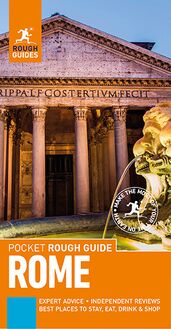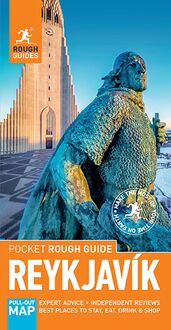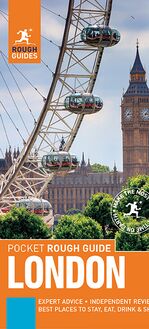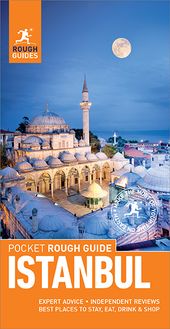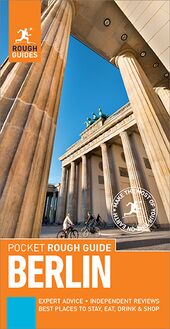-
 Univers
Univers
-
 Ebooks
Ebooks
-
 Livres audio
Livres audio
-
 Presse
Presse
-
 Podcasts
Podcasts
-
 BD
BD
-
 Documents
Documents
-
- Cours
- Révisions
- Ressources pédagogiques
- Sciences de l’éducation
- Manuels scolaires
- Langues
- Travaux de classe
- Annales de BEP
- Etudes supérieures
- Maternelle et primaire
- Fiches de lecture
- Orientation scolaire
- Méthodologie
- Corrigés de devoir
- Annales d’examens et concours
- Annales du bac
- Annales du brevet
- Rapports de stage
La lecture à portée de main
Vous pourrez modifier la taille du texte de cet ouvrage
Découvre YouScribe en t'inscrivant gratuitement
Je m'inscrisDécouvre YouScribe en t'inscrivant gratuitement
Je m'inscrisEn savoir plus
Vous pourrez modifier la taille du texte de cet ouvrage
En savoir plus

Description
Pocket Rough Guide Berlin
Make the most of your time on Earth with the ultimate travel guides.
Entertaining, informative and stylish pocket guides.
Discover the best of Berlin with this compact and entertaining pocket travel guide. This slim, trim treasure trove of trustworthy travel information is ideal for short-trip travellers and covers all the key sights (the Reichstag, Brandenburger Tor, Museum Island), restaurants, shops, cafés and bars, plus inspired ideas for day-trips, with honest and independent recommendations from our experts.
Features of this travel guide to Berlin:
- Compact format: packed with practical information, this is the perfect travel companion when you're out and about exploring Berlin
- Honest and independent reviews: written with Rough Guides' trademark blend of humour, honesty and expertise, our writers will help you make the most of your trip to Berlin
- Incisive area-by-area overviews: covering Unter den Linden, Alexanderplatz, Potsdamer Platz and Tiergarten, Prenzlauer Berg, Friedrichshain and more, the practical 'Places' section provides all you need to know about must-see sights and the best places to eat, drink and shop
- Handy pull-out map: with every major sight and listing highlighted, the pull-out map makes on-the-ground navigation easy
- Time-saving itineraries: carefully planned routes will help inspire and inform your on-the-road experiences
- Day-trips: venture further afield to Schloss Sanssouci or Potsdam. This tells you why to go, how to get there, and what to see when you arrive
- Travel tips and info: packed with essential pre-departure information including getting around, health, tourist information, festivals and events, plus an A-Z directory and handy language section and glossary
- Attractive user-friendly design: features fresh magazine-style layout, inspirational colour photography and colour-coded maps throughout
- Covers: Spandauer Vorstadt; Museum Island; Unter den Linden and the government quarter; Alexanderplatz and the Nikolaiviertel; Potsdamer Platz and Tiergarten; Prenzlauer Berg and Wedding; Friedrichshain; West Kreuzberg; East Kreuzberg; Neuköln; Charlottenburg; Schöneberg and Day-trips from Berlin
Looking for a comprehensive travel guide to Germany? Try The Rough Guide to Germany for an informative and entertaining look at all the country has to offer.
About Rough Guides: Rough Guides have been inspiring travellers for over 35 years, with over 30 million copies sold. Synonymous with practical travel tips, quality writing and a trustworthy 'tell it like it is' ethos, the Rough Guides list includes more than 260 travel guides to 120+ destinations, gift-books and phrasebooks.
Sujets
Informations
| Publié par | Apa Publications |
| Date de parution | 01 février 2020 |
| Nombre de lectures | 3 |
| EAN13 | 9781789196528 |
| Langue | English |
| Poids de l'ouvrage | 14 Mo |
Informations légales : prix de location à la page 0,0360€. Cette information est donnée uniquement à titre indicatif conformément à la législation en vigueur.
Extrait
CONTENTS Introduction When to visit What’s new Where to … Things not to miss Itineraries Places Spandauer Vorstadt The Museum Island Unter den Linden and the government quarter Alexanderplatz and the Nikolaiviertel Potsdamer Platz and Tiergarten Prenzlauer Berg and Wedding Friedrichshain West Kreuzberg East Kreuzberg Neukölln Charlottenburg Schöneberg Day-trips from Berlin Accommodation Essentials Arrival Getting around Directory A–Z Festivals and events Chronology German Small Print
BERLIN
Of all today’s European capitals, Berlin carries the biggest buzz. In the two and a half decades since it was reunified, the city has developed into a heady meld of grit and glamour that’s vastly different from anywhere else in Germany – or the rest of the world for that matter. Its edgy cultural and fashion scenes, unsurpassed nightlife and radical anti-gentrification agenda regularly make global headlines, as does its reputation as “poor but sexy” – a term coined by former mayor Klaus Wowereit and quickly adopted as the city’s unofficial motto.
Statues in front of Berliner Dom
Sabine Lubenow/AWL Images
The crackle of youthful energy that characterizes much of the inner city – especially areas such as trendy Mitte (Spandauer Vorstadt and around), student-heavy Friedrichshain and artist and expat haven Neukölln – mingles incongruously with the scars of Berlin’s less glamorous past. Holocaust memorials, concentration camps and a wealth of thought-provoking museums, such as Daniel Libeskind’s celebrated Jewish Museum, join bullet holes and empty spaces to provide visitors with constant reminders of the horrors of National Socialism and World War II. The fragments of the Berlin Wall, scattered around the city like broken concrete teeth, testify to its painful division – sometimes still reflected in the mindsets of the city’s formerly divided neighbourhoods, many of which have retained their pre-reunification identities.
So overwhelming is Berlin’s twentieth-century history and its twenty-first century grab for the future, that it’s easy to forget that the city has a longer and more illustrious history. Originally two cities – Cölln, an island in the middle of the city, now the site of the Museum Island, and Alt Berlin, formerly a fishing village – Berlin was formed in 1237. Located at the intersection of significant trade routes, it quickly prospered, rising to power as the seat of the Hohenzollern dynasty following the Thirty Years’ War. During the eighteenth century, Frederick the Great (1712–86) established Berlin – and neighbouring Potsdam, with its magnificent summer palace Sanssouci – as a grand capital for the Prussian monarchy; it was during this time that many of the buildings on Unter den Linden were constructed. When Germany was united in 1871, Berlin became its capital.
When to visit
Berlin is a great city to visit at any time of year with plenty to do and see – but like most places, it really comes alive in the warmer months. If you’re not a fan of cold weather, be warned that the winter months can be brutally chilly thanks to winds blowing in from the east. In general though, the city enjoys a cool and humid climate with an average summer temperature of around 25°C as well as the occasional heatwave. Spring and autumn are often lovely seasons.
Oberbaum Bridge
iStock
Following the defeat of World War I, during the Weimar Republic (1919–33) the city rivalled Paris as a centre for the cultural avant-garde, the legacy and spirit of which live on in contemporary Berlin. World War II reduced seventy percent of the city to ruins, and it was partitioned into American, British and French zones in the West and a Soviet zone in the East. The three Western-occupied zones eventually merged into West Berlin, while the Soviet zone in the East remained defiantly separate – the city’s division was fully realized with the building of the Berlin Wall in August 1961 by the East German government.
The fall of the Wall in 1989 provided a rare opportunity for a late twentieth-century rebirth. Berlin still carries an unfinished air and change remains an exciting constant in the city, though it’s not without its growing pains, with gentrification a red-hot topic: Prenzlauer Berg and Mitte have been yuppified beyond recognition, while in Friedrichshain, Kreuzberg and Neukölln cars are torched, windows smashed in and hip cafés spray-painted with graffiti in an effort to resist.
Hackescher Markt
Alamy
Political forces and ideals continue to battle it out in Berlin, rendering the city a vibrant and vertiginous place to be: an irresistible combination of entrepreneurial possibility and creative energy rubbing shoulders with a fully developed tourist destination overflowing with museums, sights and events. What’s not to like?
< Back to Introduction
What's new
Berlin has taken up the craft beer 'n' burgers craze with real zest. For artisan brews, check out Kaschk – particularly strong on Nordic ales – and Vagabund Brauerei , which was in the vanguard of Europe's crowd-sourced breweries. When the time comes to soak it all up, we heartily recommend The Bird , which offers a greasy slice of US-style goodness, or Marienburgerie , a little venue with a lot of big burgers.
< Back to Introduction
Where to…
Shop
Berlin’s fashion scene has been going from strength to strength in the past decade or so, with a string of local designers constantly upping the ante. The city is awash with small boutiques, with clusters around Neue Schönhauser Strasse and Münzstrasse in Spandauer Vorstadt (Mitte) and between Kantstrasse and Ku’damm in Charlottenburg, while Kreuzberg and Friedrichshain have a surfeit of street fashion stores. More commercial shopping can be found around Hackescher Markt and along Ku’damm.
OUR FAVOURITES: do you read me? , Mall of Berlin , Bikini Berlin .
Eat
The dining scene in Berlin has come on leaps and bounds since the Wall fell. Cheap eats are abundant all over the city, with snack stalls – Imbisse – hawking everything from burgers and Currywurst to Asian food. At the other end, you can dine in style at a decent selection of high-end, Michelin-starred spots – particularly in upscale areas such as Unter den Linden, Potsdamer Platz and Charlottenburg. The area in between – mid-priced restaurants – make up the majority of eating options, again all over the city, and vary from authentic and traditional German restaurants to stylish dens of cool. A particular Berlin favourite is the weekend brunch buffet, served in cafés across the city – Prenzlauer Berg is a good bet for these.
OUR FAVOURITES: Cocolo , Katz Orange , Tempo-Box
Drink
The majority of bars are independent, and relaxed licensing laws means they can usually close when they like. Though there are a decent spread of bars everywhere, the biggest concentration is around Mitte, Prenzlauer Berg, Kreuzberg and Neukölln, with many operating as cafés during the day serving snacks and light meals, and then as bars later on, staying open all the way through to the early hours.
OUR FAVOURITES: Schwarze Traube . Lemke Am Alex . Vagabund Brauerei
Party
Berlin’s nightlife scene is the envy of, well, most of the world, and its large creative scene means that people have fairly flexible schedules. The city’s nightclubs not only stay open later than most (some don’t close for days) but also purvey some of the most cutting-edge house and techno around, attracting clubbers from around the globe who come to the city just to party the weekend away at heavyweight places like Berghain and Watergate . There’s a strong concentration of clubs in Friedrichshain and East Kreuzberg, particularly along the River Spree, which divides these two neighbourhoods.
OUR FAVOURITES: Berghain , Clärchens Ballhaus , B-Flat .
< Back to Introduction
15 THINGS NOT TO MISS
It’s not possible to see everything that Berlin has to offer in one trip – and we don’t suggest you try. What follows is a selective taste of the city’s highlights, from eye-catching architecture to exceptional art.
Alamy
BERLINER FERNSEHTURM Buy an online fast track ticket to beat the queues and better enjoy the peerless city views from this Berlin landmark.
Roger d’Olivere Mapp/Rough Guides
GEMÄLDEGALERIE The undisputed heavyweight of the Kulturforum boasts hundreds of exquisite Old Masters.
iStock
MEMORIAL TO THE MURDERED JEWS OF EUROPE Nineteen thousand square metres of dramatic, disorienting concrete stelae, plus a highly emotive underground museum.
Roger d’Olivere Mapp/Rough Guides
HAMBURGER BAHNHOF This former train station now houses Berlin’s largest collection of cutting-edge international art.
Getty Images
JEWISH MUSEUM Daniel Libeskind’s Jewish Museum is notable not only for its content but also for its architectural prowess.
Diana Jarvis/Rough Guides
Reichstag Having survived fascism, revolution, bombardment and neglect, today the Reichstag is a symbol of the city’s reunification.
iStock
SCHLOSS CHARLOTTENBURG The largest palace in Berlin is also a fine example of Prussian-era architecture, built in stunning Rococo and Baroque style.
iStock
GEDENKSTÄTTE BERLINER MAUER The Wall memorial on Bernauer Strasse has fascinating free indoor and outdoor exhibitions.
Roger d’Olivere Mapp/Rough Guides
BERLINER DOM The interior of Berlin’s neo-Renaissance cathedral is as dramatic as its outsized exterior.
Roger d’Olivere Mapp/Rough Guides
PANORAMAPUNKT Take a high-speed ride to the top of the Art Deco Kollhoff Tower for soaring vistas over Potsdamer Platz and beyond.
Roger d’Olivere Mapp/Rough Guides
-
 Univers
Univers
-
 Ebooks
Ebooks
-
 Livres audio
Livres audio
-
 Presse
Presse
-
 Podcasts
Podcasts
-
 BD
BD
-
 Documents
Documents
-
Jeunesse
-
Littérature
-
Ressources professionnelles
-
Santé et bien-être
-
Savoirs
-
Education
-
Loisirs et hobbies
-
Art, musique et cinéma
-
Actualité et débat de société
-
Jeunesse
-
Littérature
-
Ressources professionnelles
-
Santé et bien-être
-
Savoirs
-
Education
-
Loisirs et hobbies
-
Art, musique et cinéma
-
Actualité et débat de société
-
Actualités
-
Lifestyle
-
Presse jeunesse
-
Presse professionnelle
-
Pratique
-
Presse sportive
-
Presse internationale
-
Culture & Médias
-
Action et Aventures
-
Science-fiction et Fantasy
-
Société
-
Jeunesse
-
Littérature
-
Ressources professionnelles
-
Santé et bien-être
-
Savoirs
-
Education
-
Loisirs et hobbies
-
Art, musique et cinéma
-
Actualité et débat de société
- Cours
- Révisions
- Ressources pédagogiques
- Sciences de l’éducation
- Manuels scolaires
- Langues
- Travaux de classe
- Annales de BEP
- Etudes supérieures
- Maternelle et primaire
- Fiches de lecture
- Orientation scolaire
- Méthodologie
- Corrigés de devoir
- Annales d’examens et concours
- Annales du bac
- Annales du brevet
- Rapports de stage
